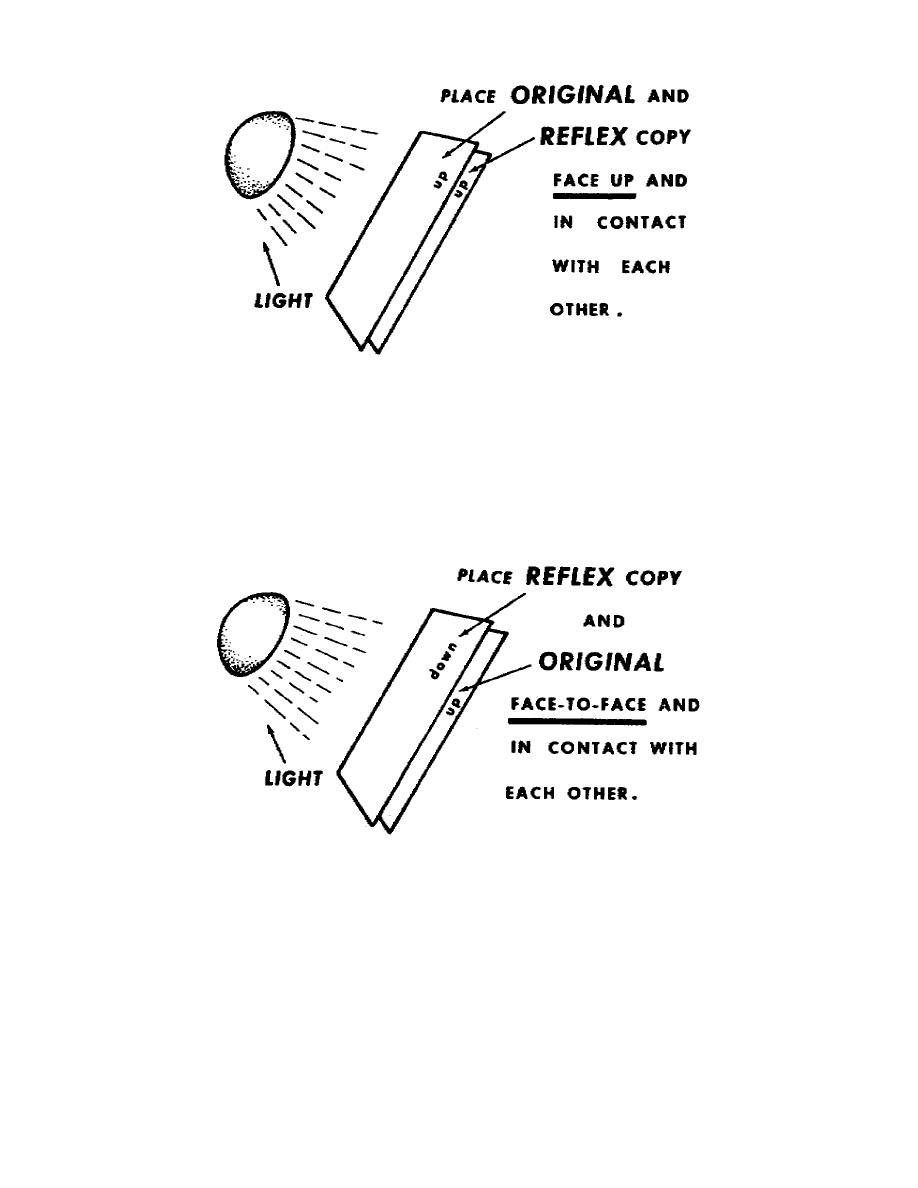
Figure 3-13. Direct copy
(3) When the original is either opaque or printed on both sides, an intermediate negative copy
must be made. The original and the reflex copy paper are placed face-to-face and exposure is made by
shining light through the reflex copy paper (fig 3-14). The result of the intermediate step is a mirror
image in that words are printed backwards, laterally reversed. By using this mirror image copy after
development as the original, and repeating the process mentioned before, you can produce a normal copy
print.
Figure 3-14. Image copy
(4) Reflex copy paper has an orthochromatic emulsion. The paper should be handled under a
series of OA safelight, and is developed in about 60 seconds in D-72 (one part stock solution to two
parts water) at 68 degrees Fahrenheit.
3.
Recap. This lesson has explained how to place an original for copying, and how to select and
place the proper lights or lighting equipment. You have been told how to measure and calculate the
correct exposure to ensure a better negative, which will enable you to produce top quality reproduction
work.
41


 Previous Page
Previous Page
